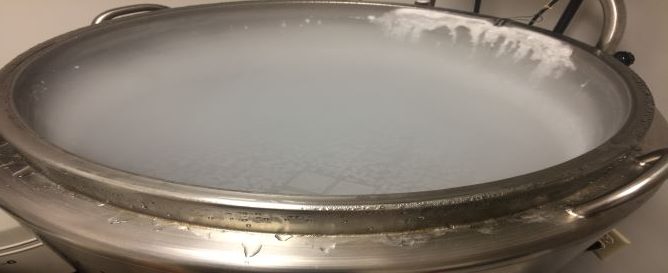Cryogenic Storage with Vapor and Liquid Nitrogen

Accuracy of Pressure
June 18, 2018Cryogenics sounds like science fiction but it is a widely used way of supercooling materials.
Cryogenic Freezers have used liquid nitrogen (LN2) because of the standard for semipermanent cryogenic storage and preservation of biological materials for over sixty years. Initially, direct submersion of biological materials into liquid nitrogen was the sole choice however when enhancements in cryogenic storage, current LN2 freezers will uphold unchanging temperatures in an exceedingly vapor part that forms on top of liquid part nitrogen. using nitrogen continues to be the simplest thanks to preserving and keep biological materials in semipermanent storage. using vapor phase nitrogen freezers will offer easier access and may defend researchers from the risks of operating with liquid nitrogen.
Liquid and vapor part systems every present various advantages. obtaining an LN2 freezer that contains each space for storing in separate liquid part and vapor phase sections. Refrigerant storage freezers that preserve biological materials in liquid phase chemical elements offer a cheap and economical thanks to maintaining the very low temperatures required for cryogenic storage. LN2 freezers with liquid-phase storage can make sure that all biological activity has ceased and putting cells in a state of suspended animation. This ensures that your samples square measure unbroken at the same temperature throughout their storage time. Maintaining a sufficient supply of liquid nitrogen can keep the temperature of the samples remaining at or below -196°C for the predictable future. At temperatures of -196°C or less, all cell activity ceases and samples ought to on paper never degrade.
Liquid phase systems are there since the start and because of their ability to keep up the systematically low temperatures LN2 cryogenic technology should stay an important a part of cryogenic sample preservation. The preservation and semipermanent storage of cell samples at identical conditions within the far future as they were at the time they were frozen needs this dependability received from a liquid phase system. It is troublesome to supply each the semipermanent storage advantages of liquid part LN2 freezers and also the easy access of vapor phase LN2 freezers. however, frequent access to samples can expose them to temperature fluctuations however a vapor part system can create retrieval easier and far safer. Biological activity ceases at -196°C and submersion in LN2 is needed to succeed in those temperatures, however, cell activity effectively stops at -135°C permitting samples to be held on at or below this temperature with none important deterioration.
That’s wherever vapor phase LN2 freezers becomes useful since they operate at a particular temperature vary between -135°C and -190°C. To accomplish this needs precise temperature observance. Having the correct sensors and alert system set up to keep up the best temperatures is crucial. dual temperature observance is required with 2 probes at variable depths, one at the vapor and one at the liquid state.

